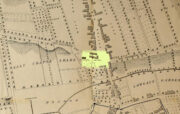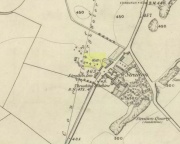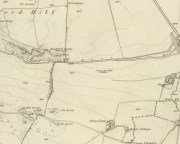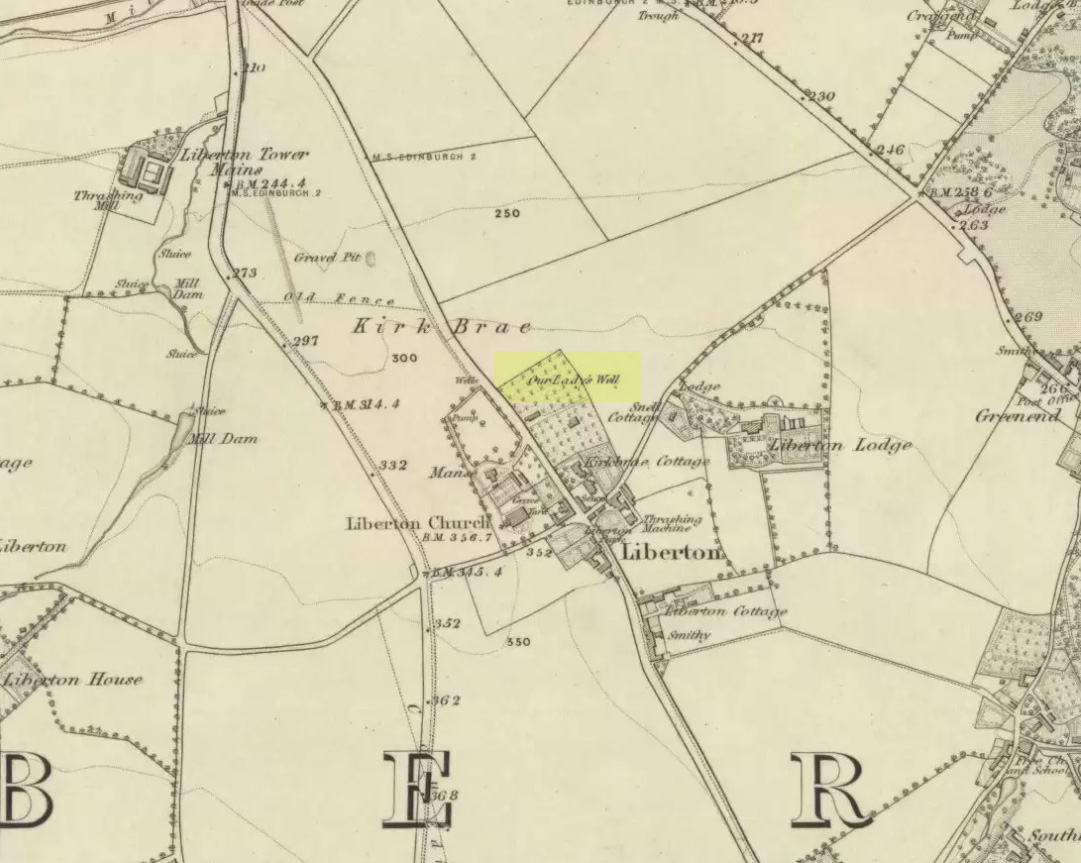Holy Well (destroyed): OS Grid Reference – NO 4026 3072
Also Known as:
- Ladies Well
- Our Lady’s Well
Archaeology & History

One of at least five sacred wells that could once be visited in Dundee: like its compatriots they have all fallen under the hammer of the Industrialists and flow no more. Our Lady’s Well could once be seen near the ancient Chapel of our Lady, “flowing from under the Chapelshade Braes,” said Maxwell (1884), its waters “bright and sparkling,” but today it has been drained and laid to rest beneath the road. Its memory however, has been preserved in the modern place-names of the Ladywell Roundabout and the nearby Ladywell Avenue.
The well was mentioned as far back as 1409 when, as Alex Lamb (1895) found, it was referred to in a contract between the Constable of Dundee and the burgesses. It flowed freely until the beginning of the 18th century when, as Maxwell told us, “the water from the Lady well was impounded and conveyed in pipes for supplying other cisterns throughout the town.” Nicoll (1923) thought there may have been a well-house built around it. Previously, the water from here was one of many springs and burns that fed the larger Castle Burn down to the sea.
The generally approved idea that Lady Wells derive from St Mary was questioned in this instance in Colville’s (1822) survey, who thought, not unreasonably, that
“As a convent stood near the same place, it is more probable that it took the name of the Ladies-well, from the fair sisterhood, who must have been the guardians of it and of all the places near them.”
He may be right. Colville also brought attention to a second water supply close by that seemed to be of equal importance in a pragmatic sense as the Lady Well herself. In danger of being destroyed, the author brought attention to it and insisted on securing its survival. He wrote:
“A little to the west, and adjoining to the Lady-well, is a large garden lying on a gentle declivity, called the Lady-well Yard,— in which there is a most abundant spring of excellent water, that was never known to fail in the driest summer, even when the Lady-well was so drained as not to afford supply to the inhabitants. Should this be employed for a steam-engine in the present prosperous state of manufactures, a pit for the water would require to be sunk, which might materially injure the Lady- well. It would certainly, therefore, be of advantage to the town, if the Magistrates could procure this property,— which would prevent the Lady- well being endangered; and the addition of this copious spring would at all seasons afford a plentiful supply of excellent water to the town.”
References:
- Colville, A., Dundee Delineated, A. Colville: Dundee 1822.
- Lamb, Alexander C., Dundee: Its Quaint and Historic Buildings, G. Petrie: Dundee 1895.
- Maxwell, Alexander, The History of Old Dundee, David Douglas: Edinburgh 1884.
- Nicoll, Alexander, The First History of Dundee, D. Winter: Dundee 1923.
© Paul Bennett, The Northern Antiquarian



